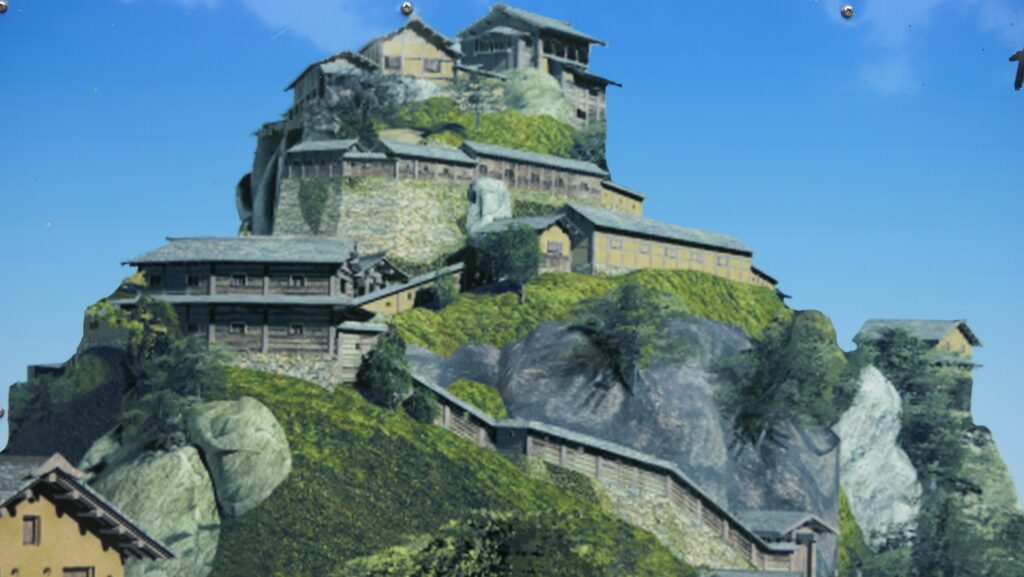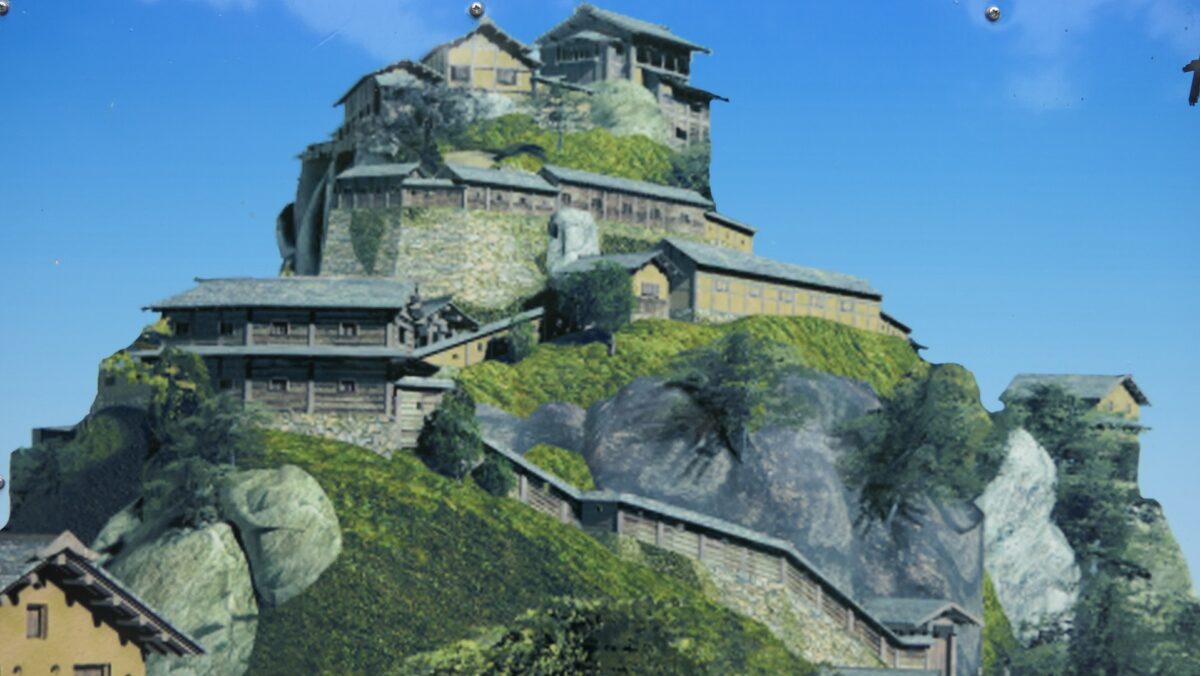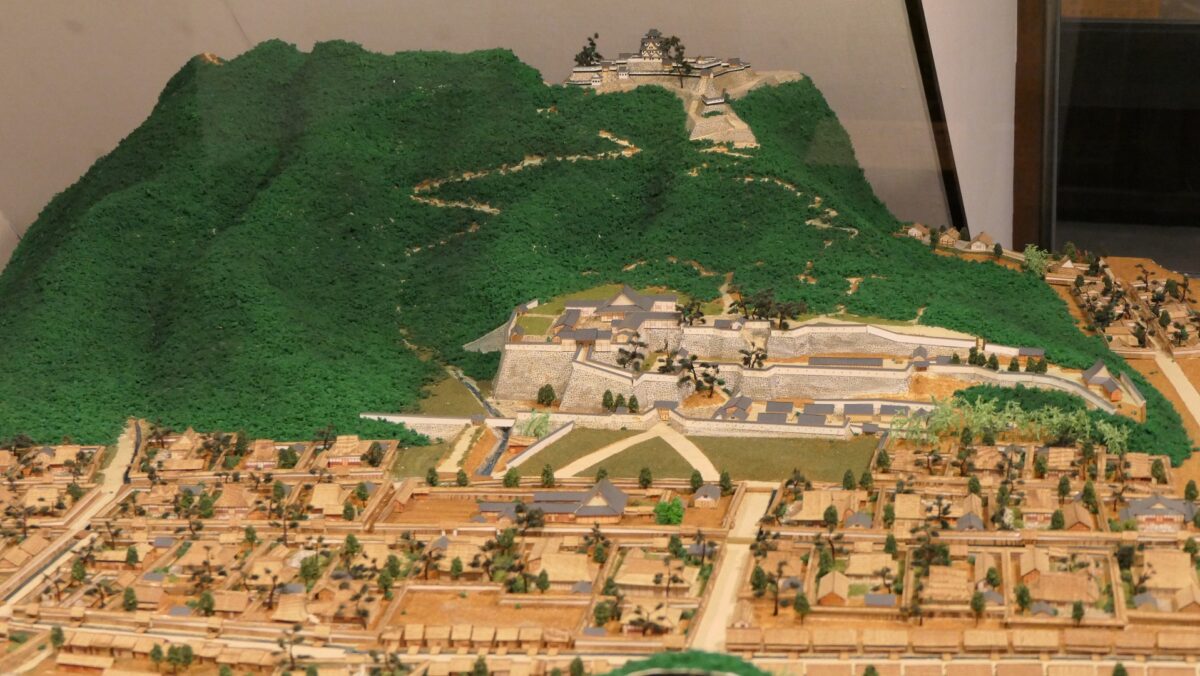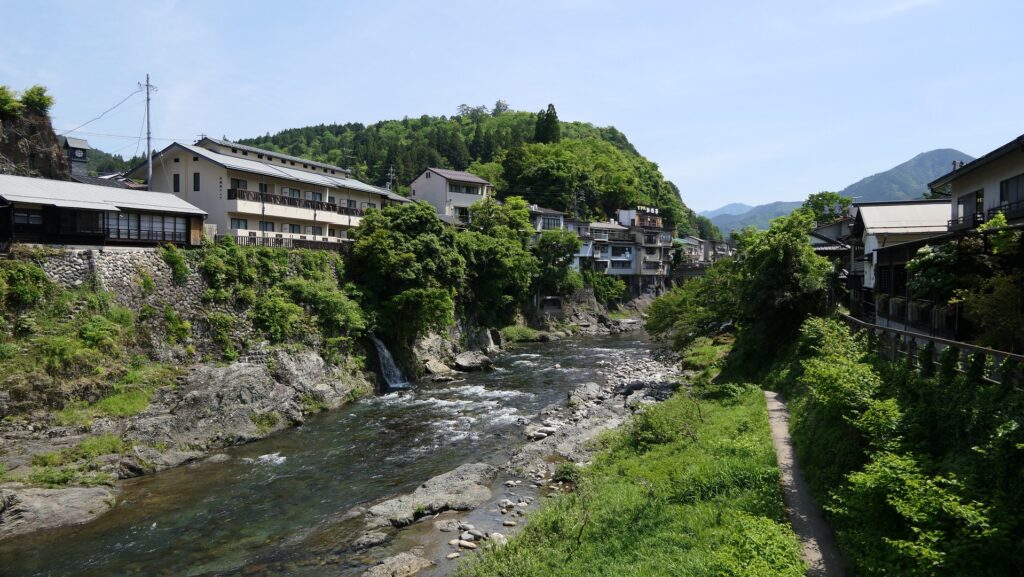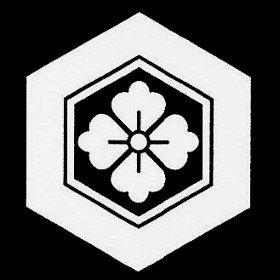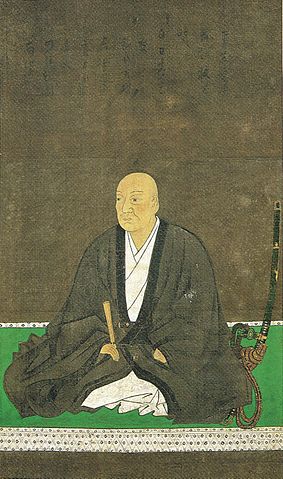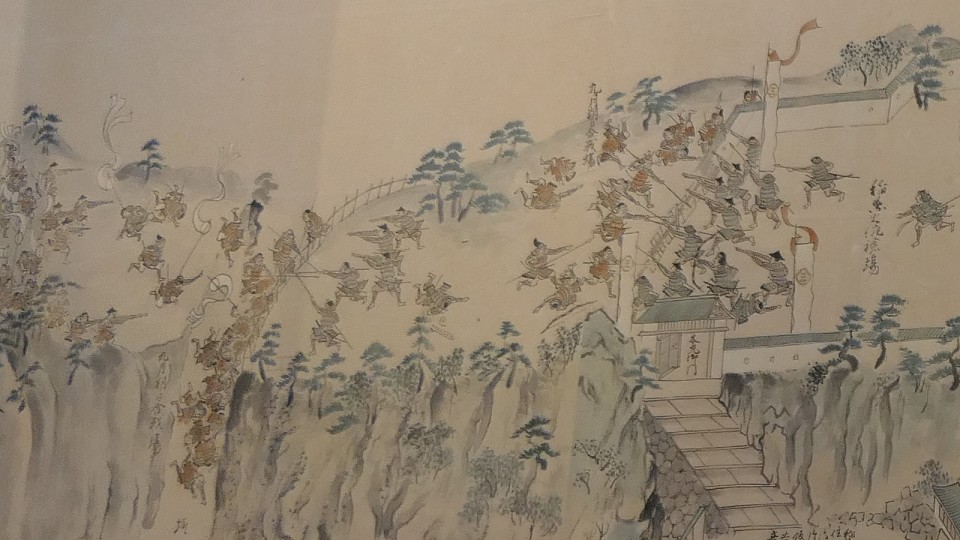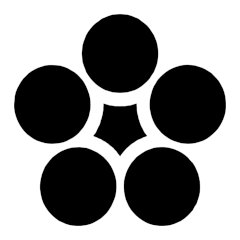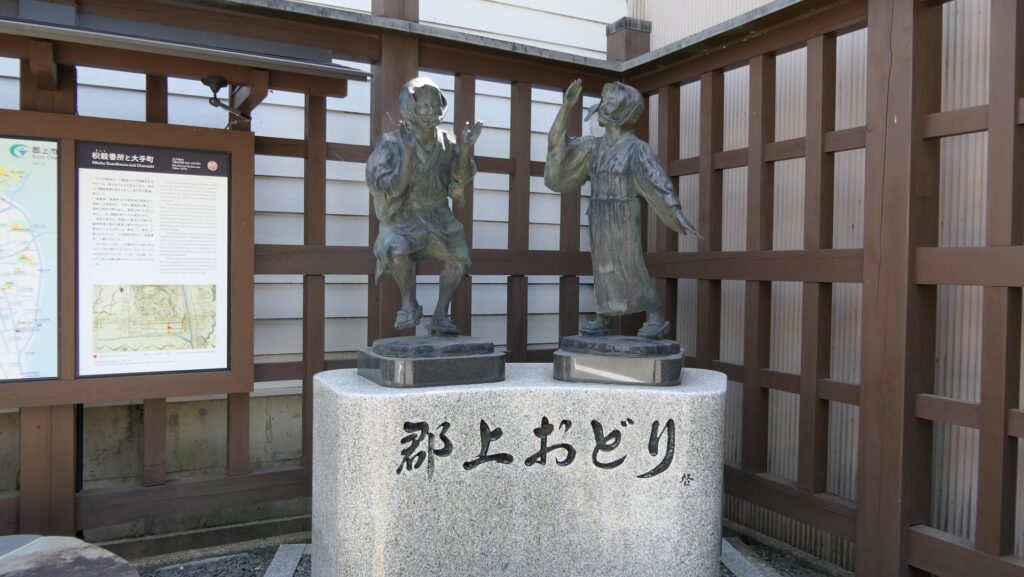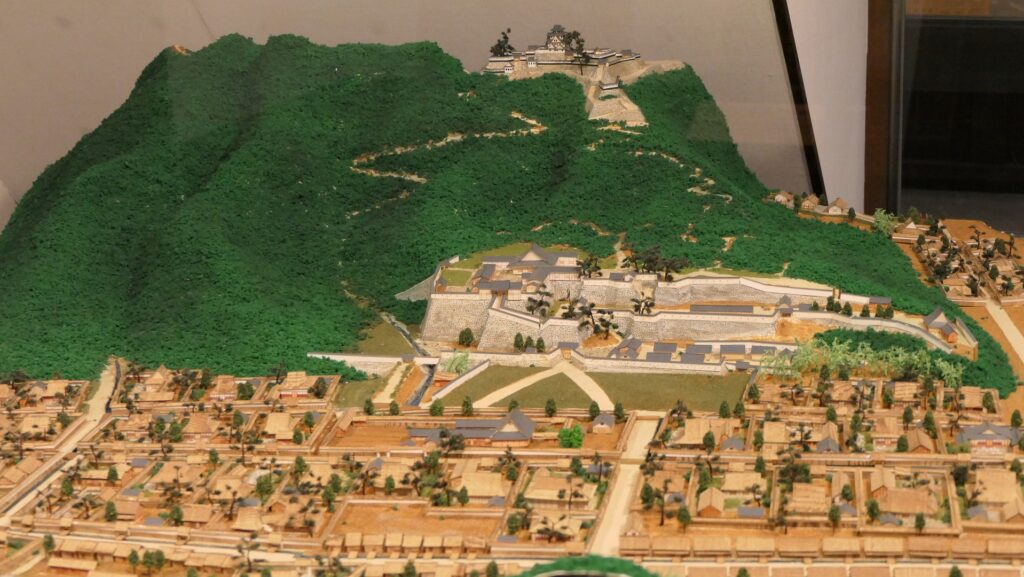Location and History
Castle monitoring Nakasendo Road
The Nakasendo Road is known for being one of the major roads in Japan and was designated as one of the Five Major Roads in the Edo Period. In particular, the road was the most useful one when large amount of troops moved between western and eastern Japan before the period. The area of what is now Nakatsugawa City in the eastern part of Gifu Prefecture had Nakatsugawa Post Town in a basin at the center with the road going to mountain areas in the east. That’s why the warlords in the Sengoku Period wanted to own the area to monitor this important spot on the road. Naegi Castle was built on Takamori Mountain beside Kiso River which was sandwiched by the castle and the town. That meant the castle was the most suitable for monitoring what happened on Nakasendo Road.
The location of the castle The relief map around the castle
Toyama Clan builds and somehow maintains Castle till end
In the 16th Century during the Sengoku Period, The Toyama Clan was one of the local warlord families in the area, which was called the eastern Mino Province. It is said that the clan first built the castle in the first part of the16th Century as a branch castle of their home base, Iwamura Castle. However, the clan was affected by other larger warlords such as the Takeda and Oda Clans which also wanted to own the area. For example, both the Takeda and Oda Clans battled each other between 1572 and 1582, gaining and losing this castle.
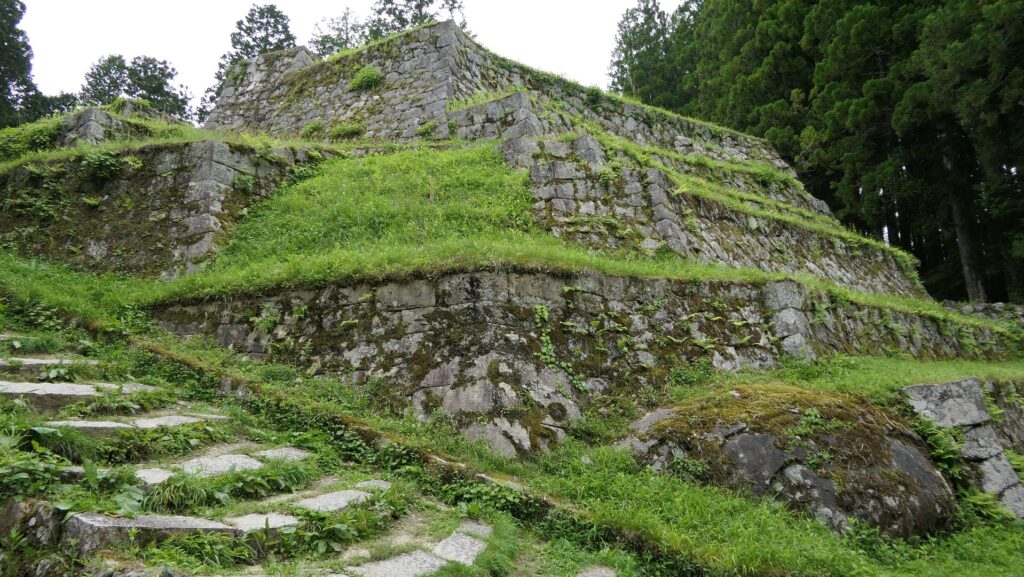


After the declines of both, the Mori Clan, under the ruler Hideyoshi Toyotomi captured the castle. Tomomasa Toyama, with his father Tomotada, the lord of the castle at that time, had to escape from the castle to Ieyasu Tokugawa at Hamamatsu Castle. In 1600 when the Battle of Sekigawara occurred, Tomomasa succeeded in getting Naegi Castle back with Ieyasu’s approval. After Ieyasu established the Tokugawa Shogunate, the Toyama Clan governed the castle again as the Naegi Domain until the end of the Edo Period.
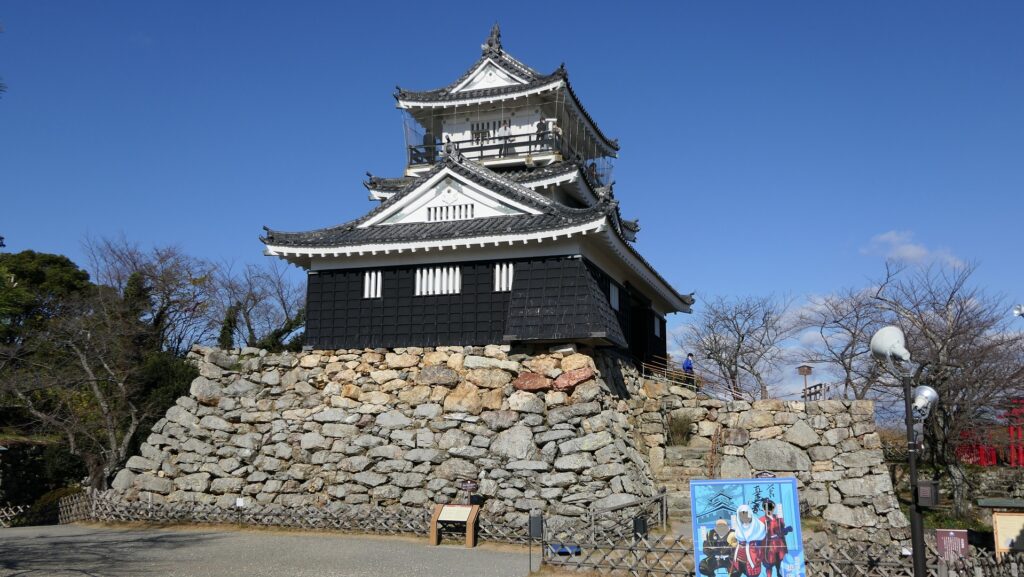
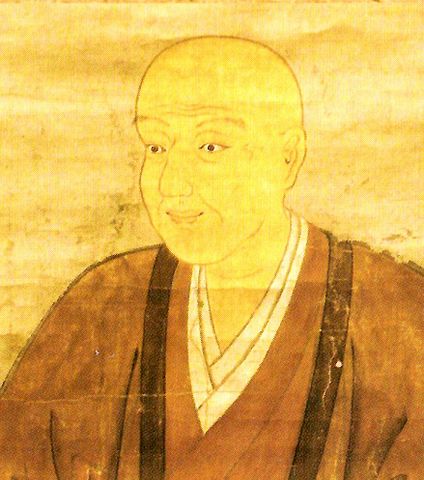
Castle on Rocky Mountain, Main Tower on Huge Rock
Naegi Castle had a very special location as far as permanent castles in Japan go. The mountain the castle is located on has a rocky terrain and steep cliffs. It was good for the defenders to make very difficult to attack, but if the lord of the castle wanted to develop it, there would be few spaces to do so. Generally, buildings or inter routes of castles were built on stone walls surrounding natural terrain or stone wall bases at that time. However, in the case of Naegi Castle, it was difficult to cut the rocky surface for buildings or routes. As a result, they were built on bases mixed with natural rocks and stone walls or filled valleys. Even if more buildings were needed, they were built on natural rocks directly. For example, the Main Tower of the castle was built on the huge rock on the top of the mountain.
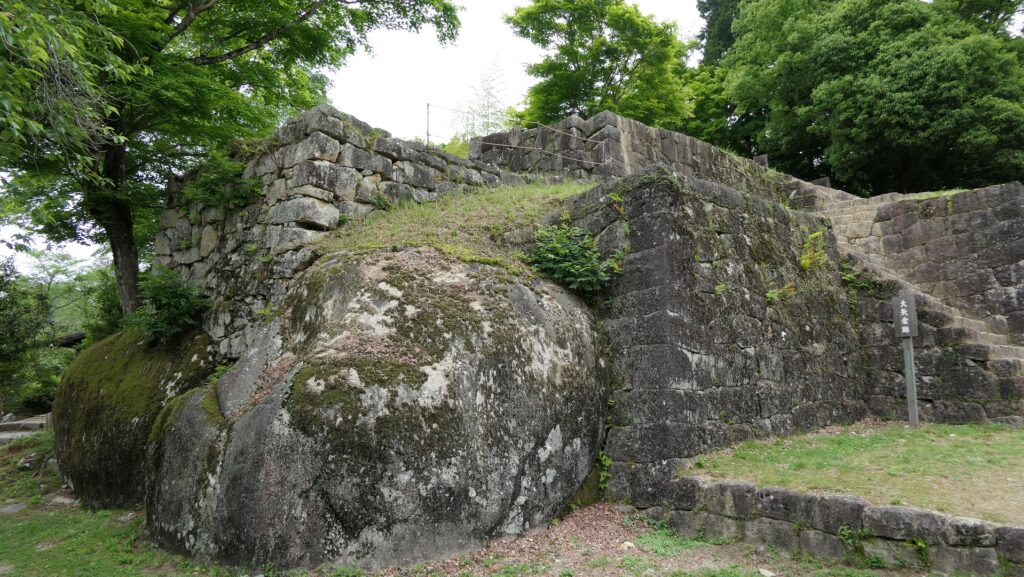
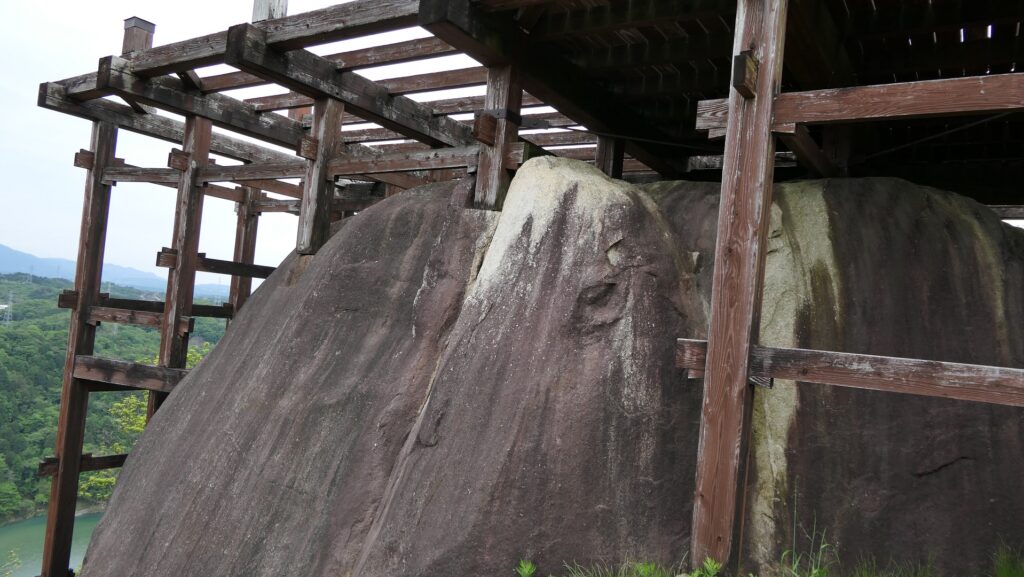
Traditionally, when Japanese people wanted to build a building on natural rocks, they used a method called Kake-zukuri. The method is to build the foundation by combining many columns and horizontal beams like lattices on a steep rock or cliff. Buildings using this method have still been seen in some old shrines and temples like Kiyomizu-dera Temple in Kyoto. It is said the reason for using this method is that the mountains themselves, which have the rocks or cliffs, are the objects of worship. When many castles were built during the Sengoku and the first part of the Edo Period, the method was applied to castles. Naegi Castle is a good example, and another case in Sendai Castle is known.
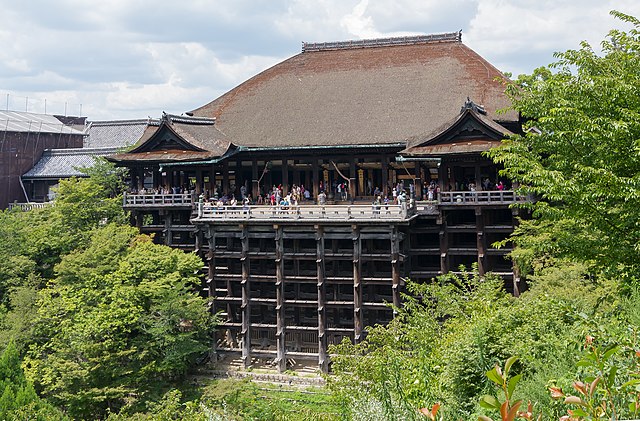
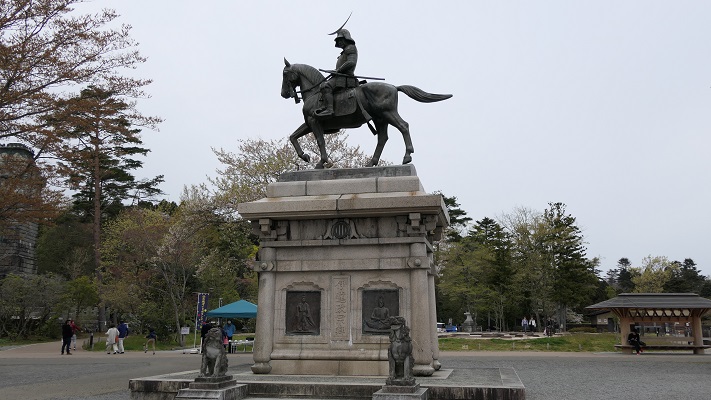
The Naegi Domain earned only 10 thousand koku of rice which was a minimum amount for an independent lord. Because of this, their castle buildings had wood shingle roofing and wood siding or mud walls, not roof tiles and plaster walls which were too expensive for them. However, they built and maintained these buildings under such severe conditions even during the long lasting peace of the Edo Period. This was because staying there to be ready for any emergency was their most important duty.
